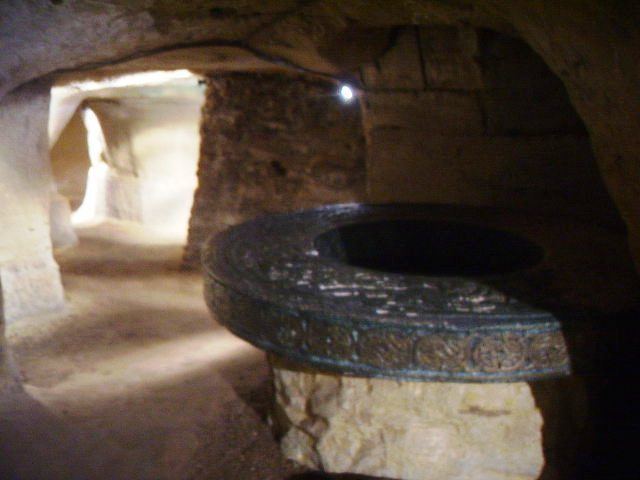Established 2004 Phone +44 115 988 1955 | Website Official website | |
 | ||
Address intu Broadmarsh, Upper Level, Broadmarsh Shopping Centre, Nottingham NG1 7LS, UK Hours Open today · 10:30AM–4PMMonday10:30AM–4PMTuesday10:30AM–4PMWednesday10:30AM–4PMThursday10:30AM–4PMFriday10:30AM–4PMSaturday10AM–4PMSunday10AM–4PM Similar Galleries of Justice Museum, Ye Olde Trip to Jerusalem, Green's Mill - Sneinton, Old Market Square, Nottingham Contemporary Profiles | ||
Nottingham city of caves
City of Caves is a visitor attraction in Nottingham which consists of a network of caves, carved out of sandstone that have been variously used over the years as a tannery, public house cellars, and as an air raid shelter.
Contents
- Nottingham city of caves
- Case 8 city of caves
- History
- Medieval tannery
- Drury Hill slums
- Air raid shelter
- References
The attraction is accessed from the upper level of the Broadmarsh Shopping Centre.
The attraction has been run by the Egalitarian Trust, which also runs the Galleries of Justice, since 2004 and a joint ticket is available for visitors to visit both attractions.
Case 8 city of caves
History
Nottingham sits upon a soft sandstone ridge which can easily be dug with simple hand tools to create artificial cave dwellings. Indeed, Nottingham was known as Tigguo Cobauc in Old Brythonic meaning Place of Caves and was referred to as such by the Welsh Bishop of Sherborne Asser in his The Life of King Alfred (893AD). The caves here are some of the oldest remaining in the city, with pottery finds dating them to 1270-1300, and were inhabited from at least the 17th century until 1845 when the St. Mary's Inclosure Act banned the renting of cellars and caves as homes for the poor. None of the caves are natural; they were all cut into the sandstone for use as houses, cellars and place of work by the inhabitants of the city.
If a man is poor he had only to go to Nottingham with a matlock, a shovel, a crow, an iron, a chisel or a mallet, and with such instruments he may play mole and work himself a hole or burrow for his family.
As of 2014 more than 500 caves in the city have been catalogued, including 100 that were only rediscovered in the last four years.
Construction of the Broadmarsh Shopping Centre began in the late 1960s, but the opening up of the caves to vandals and plans to fill them in with concrete caused a public outcry. A detailed study by The Nottingham Historical Arts Society led to the caves being scheduled as an ancient monument and the development plans were subsequently changed to preserve most of the caves. The caves were cleared by volunteers from the 2418 Sherwood Squadron Air Training Corps and Rushcliffe School and opened to public tours by the Friends of Nottingham Museum in 1978.
Medieval tannery
Two caves cut into the cliff face and opening out to daylight housed the only known underground tannery in Britain. The Pillar Cave was originally cut around 1250 but had been filled in by a rock fall by 1400. It was cleared and reopened as part of the tannery in 1500, with circular pits cut to hold barrels. A second cave was also cut with rectangular clay-lined vats. The small size of the vats in these caves indicate that they were probably used for sheep or goats skins rather than cowhide. There was an opening to the River Leen where they would wash the skins in the town's drinking water.
Drury Hill slums
The basement walls here are all that remains of the buildings of Drury Hill, once a wealthy neighbourhood in the medieval city that by the 19th century had degenerated into one of the worst slums in Britain by the 19th century. Poor families slept, ate and lived in the single room basements here with overcrowding and poor sanitation making it a breeding ground for cholera, tuberculosis and smallpox.
Air-raid shelter
Some of the caves here were joined and expanded to house one of 86 public air raid shelters that were found in the sandstone beneath the city by February 1941 to protect its inhabitants during the bombing attacks of the Second World War, including a particularly severe one on 8 May 1941 that is recreated as part of the tour. Holes were also dug here to supply the sand used in the sandbags that helped to protect the city.
